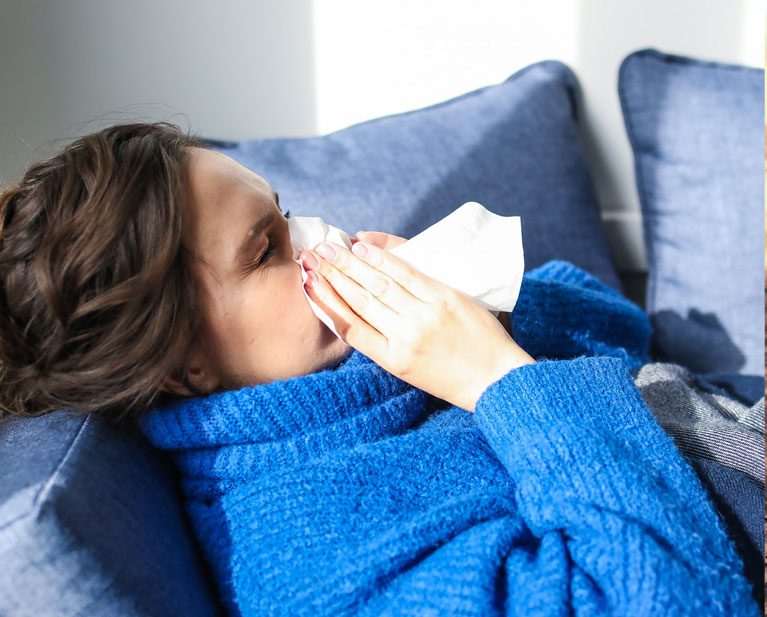During the height of seasonal allergies, cold and flu season, and Coronavirus circulation, it’s crucial that we take care of our bodies for optimal immune system function. Doing so will also significantly reduce the odds of exposure to the rest of the population.
Evolution has provided our bodies with natural ways to fight the spread of these viruses. One of these evolutionary marvels is our nasopharynx, or the nasal passage in our airways. This passage is an air tunnel that warms and humidifies incoming air. The nasal passage allows our body to filter dust, pollen, bacteria, and viruses prior to circulating to the lungs (1, 2).
How Breathing Patterns Make a Difference
Habitual mouth breathers that inhale through their mouths don’t allow incoming air to be filtered appropriately (2, 3). Take a moment to check your breathing; if you notice you mostly inhale through your mouth, it’s important now more than ever to make an effort to change this pattern. Practice inhaling through your nose and exhaling through your mouth to not only improve your overall health but also to prevent the spread of illness.
Diaphragmatic Breathing
Another important concept for correct breathing and preventing illness is making sure to use our diaphragms appropriately. Belly breathing is an unfortunately common practice as a result of prolonged sitting postures. This pattern forces shallow breathing and compensation through neck muscles to get air into our lungs (4).
If you place one hand on your chest and the other hand on the bottom of your ribcage and breathe in through your nose, you should feel your ribcage expand outwards into your hand. If this does not occur or you feel your ribcage moving upwards towards your neck, it’s possible that your diaphragm is not participating fully during inhalation.
Performing correct diaphragmatic breathing at a rate of five to six breaths per minute improves airflow throughout the lungs. It has also been shown to induce relaxation by calming our sympathetic (fight or flight) nervous system (2, 4).
Start practicing these breathing patterns frequently throughout the day until your brain starts adapting to this change in behavior. Doing so will assist the process of preventing the spread of viruses.
Sources:
- Moore, KL, Dalley AF, Agur AMR. Clinically Oriented Anatomy. 6th Ed. Lippincott Williams and Wilkins, 2010.
- Liao, Felix. Six Foot Tiger Three Foot Cage. Crescendo, 2017.
- Crupi P et al. Correlations between Cephalic posture and facial type in patients suffering from breathing obstructive syndrome. European Journal of Pediatric Dentistry. 2(2007) 77-82.
- Hruska, RJ. Influences of dysfunctional respiratory mechanics on orofacial pain. Orofacial Pain and Related Disorders. 41(2) 1997, 211-227.





